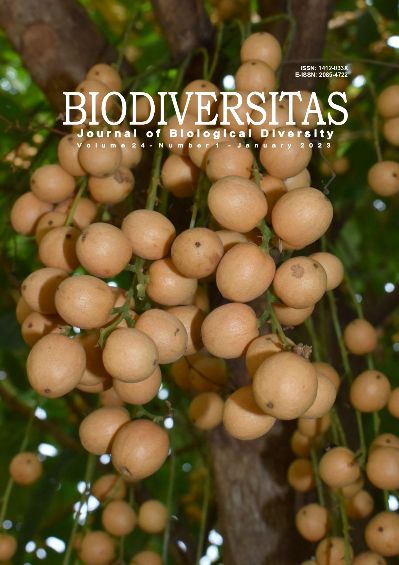The role of coffee agroforestry on available water capacity and root length density in smallholder plantation
##plugins.themes.bootstrap3.article.main##
Abstract
Abstract. Khoirunnisak A, Prijono S, Wicaksono KS. 2023. The role of coffee agroforestry on available water capacity and root length density in smallholder plantation. Biodiversitas 24: 55-61. The application of coffee agroforestry has several advantages, such as increasing the cycle of nutrients and soil organic matter as well as improving soil physical properties. However, there is still an information gap related to the interaction between coffee plants and shade plant roots. This study aimed to evaluate coffee agroforestry on available water capacity (AWC) and root length density (RLD). The research was carried out at the smallholder coffee plantation in Dampit District in four shade types (coffee-open, shaded with Musa sp., shaded with Gliricidia sp., and shaded with L. leucochepala). Soil and root samples were taken at three depths (0-20 cm, 20-40 cm, and 40-60 cm) and at two distances (near the coffee stems and between the coffee shade). The variables observed were AWC, RLD, soil organic C, soil aggregate stability, and soil penetration resistance. The result was coffee plants with shade trees increased AWC value and root density compared to coffee-open. The type of shade significantly affected RLD, where shaded with Gliricidia sp., and shaded with L. leucochepala were better than coffee-open. This indicates that there was no root competition between coffee plants and shade trees. However, shaded with Musa sp. had lower RLD than coffee-open. Soil depth had a significant effect on the AWC value and root length density of coffee plants, where the most AWC values ??and coffee root distribution were higher at a depth of 0-20 cm.

